Intel Skylake Z170 Motherboards: A Quick Look at 55+ New Products
by Ian Cutress on August 5, 2015 7:59 AM ESTMSI Z170: Gaming MX Range
Followers of the motherboard industry will recognize that MSI has been on a gaming binge as of late. Almost everything out of MSI that ends in the hands of general consumers is in some way part of the Gaming brand, and each generation it seems to grow and grow. MSI’s take on Z170 also exhibits some major changes, wherein almost every motherboard has ‘gaming’ in the title. It would also seem that the OC Certified line of overclocking motherboards from MSI has been merged into the Gaming brand, so what was once the XPower now becomes the XPower Gaming Titanium Edition. MSI is also changing up the styling a little as well, experimenting with different colors and a wide range of RGB applications on several models.
MSI Z170A Gaming M9 ACK
At the top of the line sits the M9 ACK. MSI’s Gaming number scheme is going to confuse a number of people because in this instance, M does not mean micro-ATX as it does on other models. MSI is merely using it to differentiate between other manufacturers that also use the ‘Gaming’ nomenclature by implying that this M is for ‘Master’. But the ACK part of the name refers to the use of a Killer E2400 network port with the Killer 1535 802.11ac 2T2R dual band WiFi, both of which can be used in tandem for directing prioritized network traffic selected in software and promoting UDP transfers.
The Gaming M9 ACK takes things a little differently to the normal motherboard implementation. The power delivery heatsink doubles up as an air and water cooling solution whereby the user fits their barbs into the block. The PCIe layout also shows these two silvery bits over the slots – these are meant to be slot protectors. According to some manufacturers, slots have been destroyed when putting in heavy graphics cards and then transporting the system (in one case, we saw images which referred to TSA breaking a system in order to look at suspicious parts because they didn’t lnow how to take out the graphics cards). The purpose of these ‘steel armor’, or so MSI calls it, is to prevent the PCIe slots warping in this instance.
The PCIe layout gives x8/x8 arrangement in the steel slots with a PCIe 3.0 x4 in the middle which seems to come from the chipset. Above both of the steel slots is an M.2 slot in PCIe 3.0 x4 mode which both act as the storage hub alongside six SATA 6 Gbps ports and two SATA Express ports. Perhaps somewhat surprisingly, the three single PCIe 3.0 x1 slots on the board are all open ended, allowing for larger PCIe cards when needed.
The nib on the bottom right of the front of the motherboard should also be pointed out. Previously MSI used the term ‘OC Genie’ to refer to their one-button automatic overclock system. After years of requests, MSI has finally upgraded it to a multi-stage overclocking utility, this time using a twist dial that sequentially raises the CPU frequency and voltage. In fact, this one goes up to 11 – literally.
The rear panel shows the dual stream Killer WiFi along with a gaming port, a BIOS Flashblack slot, a USB 3.1-A, a USB 3.1-C and video outputs via the Displayport and HDMI. It’s worth noting here that the USB 3.0 ports and the USB 3.1 ports are both red, making it somewhat confusing. To make matters worse, MSI uses the USB 3.1 Gen1/2 terminology on its datasheets – to clarify, ‘USB 3.1 Gen 1’ is technically USB 3.0 whereas ‘Gen 2’ is actually USB 3.1.
The M9 ACK is meant to be the flagship motherboard for covering MSI’s new audio relationship with Nahimic audio. As a result this means we get an upgraded CMedia CM6632 audio processor solution paired with an ‘Xtreme Audio DAC’. I’m sure when the board comes out we will see exactly what that means, but it’s worth noting that the EMI covering over the audio segment of the motherboard goes quite far down and around the bottom. This is because the M9 ACK comes with a rear stiffened panel to help with motherboard rigidity:
I am told that the MSI Gaming M9 ACK will have a UK MSRP of £320. Take away tax and convert to USD gives $415, making it one of the most expensive Z170 motherboards.
MSI Z170A Gaming M7
We’ve had the Gaming M7 in for testing for over a week, despite initially getting what seemed like a dodgy sample that was more an early defect than anything serious. But the styling goes forth and continues with the MSI Gaming dragon and rear IO panel cover. Similar to the M9 ACK we get two active PCIe slots and another PCIe 3.0 x4 from the chipset.
The M.2 slots here are almost a headache to work out, but basically one is M.2 PCIe 3.0 x4 enabled and the other is SATA only, except when a SATA M.2 is used it will disable a pair of SATA ports on the board. This method could have been made simpler by just using four lanes from the chipset on each of the M.2 slots, but this is the direction MSI decided to use.
The Gaming M7 also comes with the Killer E2400 NIC, but this time the regular Realtek ALC 1150 audio solution is used. USB 3.1-A and 3.1-C ports are on the rear, but similarly to the M9 they are colored red and match the USB 3.0 ports. Current pricing puts the M7 at £180 in the UK, which translates as $230 stateside.
MSI Z170A Gaming M5
Moving though down the M5 and more features get exchanged for simpler implementations. The rear panel cover is gone and we are reduced from two HDMI ports with a DP to a HDMI/DVI-D combination. USB 3.1-A and 3.1-C are still here and provided by the ASMedia ASM1142, with the Killer E2400/Realtek ALC1150 combo still in play. The auto-overclock dial is now cone too, along with power/reset buttons. Other users will notice the power delivery has been dialed back as well, but the M.2 combination implementation is still present.
The M5 should have an MSRP of £150/$195.
MSI Z170A Gaming M3
The Gaming M3 is the current bottom of the Gaming Master line. Here we have a single PCIe 3.0 x16 paired with a PCIe 3.0 x4 from the chipset which gives CrossFire support only when using two discrete cards. The network solution is still the Killer E2400, and we still have a single PCIe 3.0 x4 M.2 slot above the PCIe slots. USB 3.1 is moved to two Type-A slots, with no Type-C here. Users will note the use of PCI slots, supplied by an ASMedia bridge chip for legacy applications. Yes, some users/companies still have expensive hardware that requires PCI control.
MSI Z170A Gaming Pro
The Pro, despite the name, is one of the cheapest MSI Gaming based motherboards coming between the M3 and the M5. Here you will notice a strip down the right hand side and slightly different styled heatsinks – this is because the Pro is engineered for MSI’s ‘Mystic Light’. This is a fancy marketing name for LED lighting on the right hand side which promises 16.5 million color resolution, 8 LED effects and for it all to be controllable via an application.
Other functionality is given as x8/x8 PCIe configurations for SLI, although our documentation is not clear if that final PCIe slot is x4 from the CPU or the chipset which could have repercussions for SLI when the final slot is in use. Networking on this model is given by the Intel I219-V network controller, audio via the Realtek ALC1150 and two USB 3.1 Type-A ports on the rear panel from an ASMedia ASM1142.


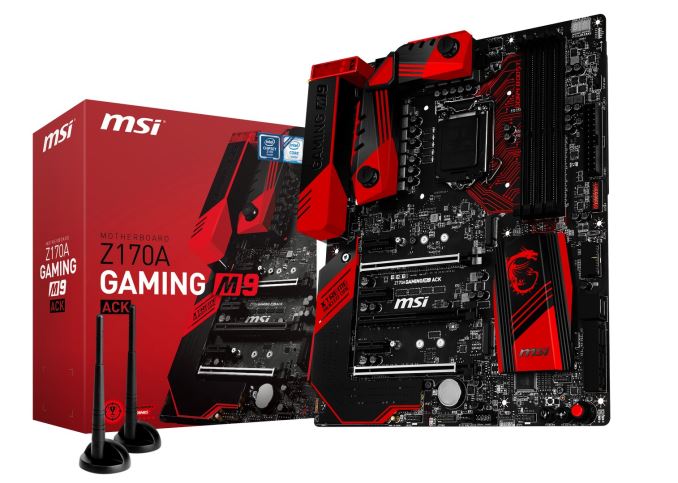








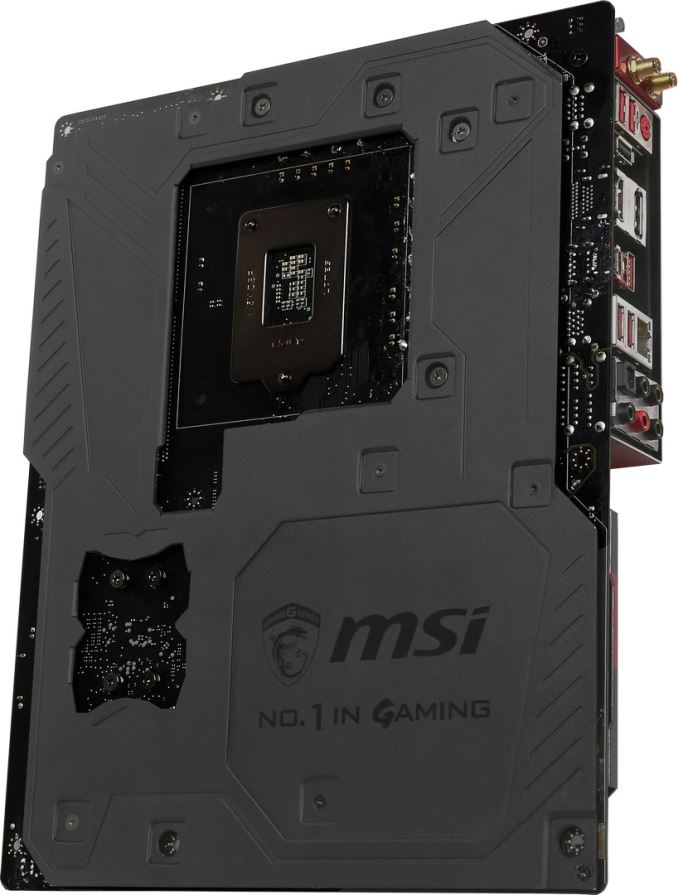
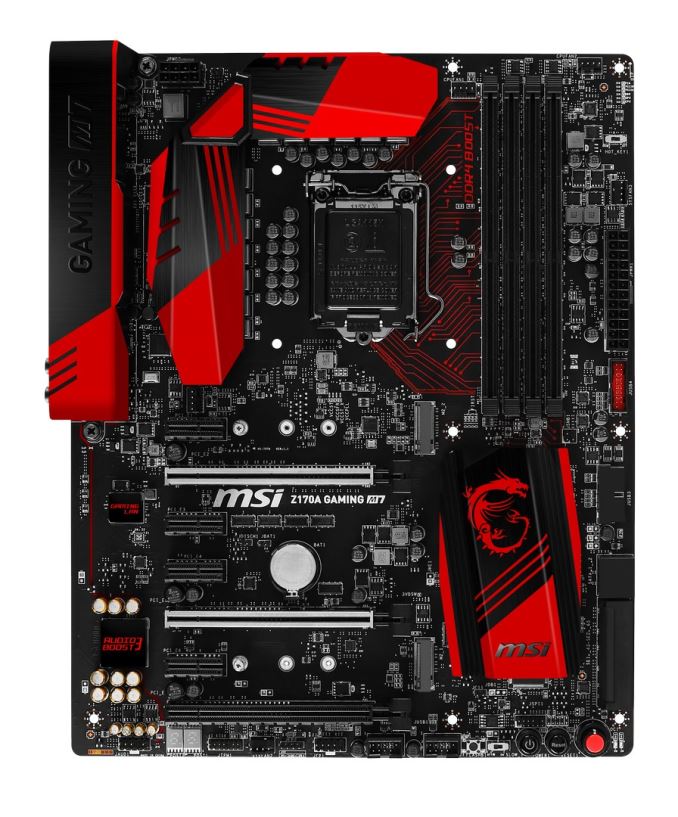







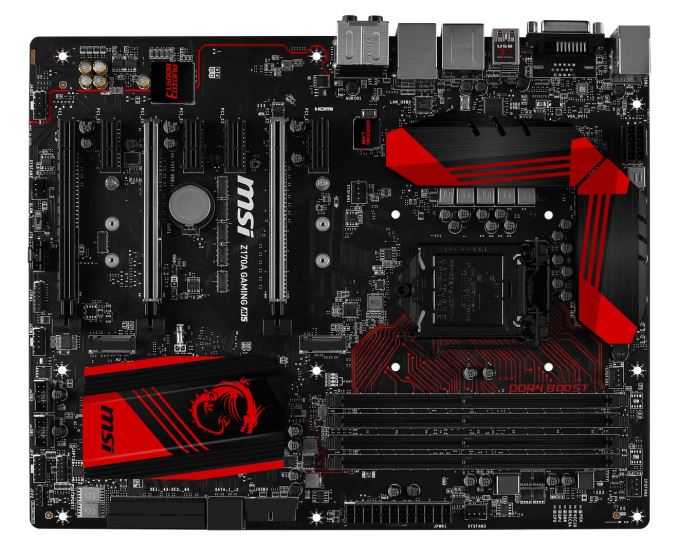
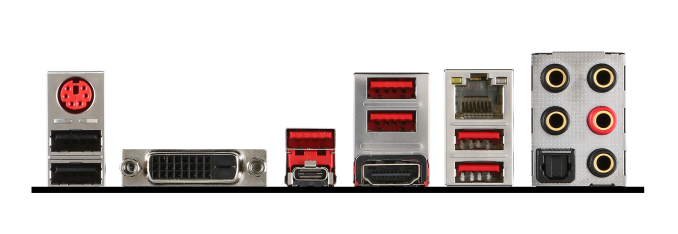






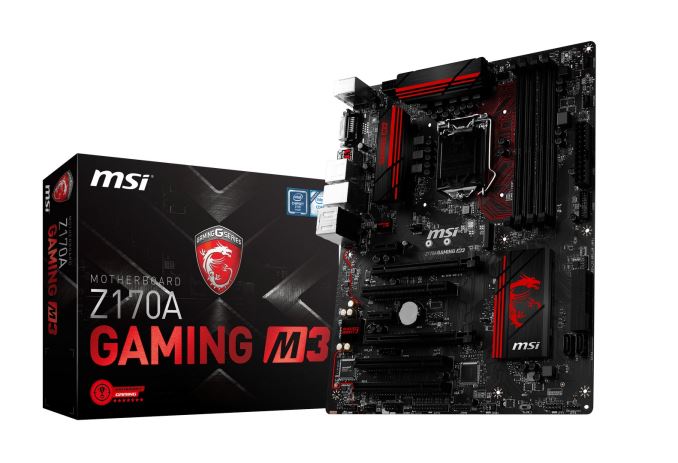







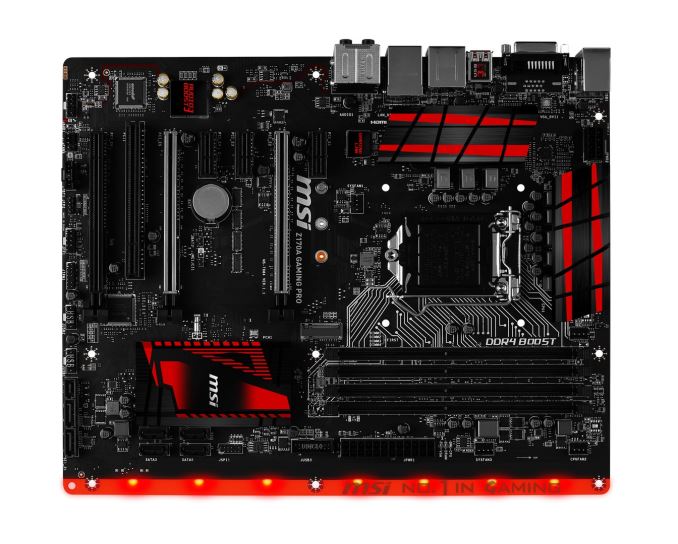















85 Comments
View All Comments
Oyster - Wednesday, August 5, 2015 - link
Ian, do you think it is possible to supply us with a tabular breakdown of all the motherboards? Not sure about others, but going through page-by-page is a bit overwhelming, and confusing at the very least. Good coverage as usual!Eidigean - Wednesday, August 5, 2015 - link
I second this. looking for number of M.2 slots, PCIe slots, USB 3.1 ports w/ type of controller (Alpine or otherwise). I'm shocked so few support 3 M.2 slots.MrBowmore - Wednesday, August 5, 2015 - link
Why not just use the pcie? Is there anything better than a intel 750 and demands M.2? I dont get the need for M.2.Eidigean - Wednesday, August 5, 2015 - link
Well, the SM951 is quite interesting. Also, if the M.2 slots are used, the PCIe slots can be used for 4 GPUs, NICs, or RAID cards. The ASUS workstation board in this article is interesting.Gadgety - Wednesday, August 5, 2015 - link
Tabular would be great.The_Assimilator - Wednesday, August 5, 2015 - link
Z170X-UD5 and Z170X-UD3 galleries are swapped.I'm glad to see that Gigabyte is exposing 2x USB 3.0 internal headers on almost all their boards - USB 2.0 needs to die. Now if only they would replace the dual USB 2.0 headers with an additional 3.0, giving 3x USB 3.0 headers, then I would be ecstatic. My Z77X-UD5H is still the only decently-priced motherboard around with a trio of USB 3.0 headers, and it's not getting any newer!
Regardless, I'm probably going to skip Skylake, for the simple reason that I'm not interested in buying a board equipped with the useless SATA Express. By the time Cannonlake rolls around, M.2/NGFF should have killed SATAe and there will be even more USB 3.0 ports from the chipset.
DanNeely - Wednesday, August 5, 2015 - link
I bought a GB board for a 4790k earlier this year for the dual headers. At least in the medium term though, I think they do need to keep 1 or 2 2.0 headers around. Not everyone buys a new case for their new builds, and older cases have built in 2.0 ports on the front/top panel. The same thing for front panel SD card readers; there are USB 3.0 versions out now, but the SD reader won't benefit from the faster connection so why spend money to replace it. I can't remember who makes it, but there's one OEM who sells some PSUs with an internal USB2 header for monitoring purposes.Beyond all of that, the chipset itself provides 14USB ports only 10 of which can be 3; so the mobo makers have 2 "free" headers to do something with. Dell/HP/etc will ignore them; but in the box ticking consumer market they're going to get used either for internal headers or a pairs of ports in the back. Anyone clinging to w7 who doesn't have PS2 peripherals in the closet will need those since 7 doesn't have a USB3 class driver; and at least in my case refused to talk to a 2.0 device in a 3.0 port until I got drivers installed.
Impulses - Thursday, August 6, 2015 - link
If you're using an SD reader for a modern camera with modern SD cards then it'll absolutely benefit from USB 3.0... Last 128GB SD I bought for like $58 can read at 150MB/s (or about 3x USB 2.0 speeds), Lexar UHS-II card. Most recent mirrorless bodies can take advantage of it too...8steve8 - Wednesday, August 5, 2015 - link
when will these actually be for sale?Ian Cutress - Wednesday, August 5, 2015 - link
Depends on the motherboard and what region you are in, but some are listed already: http://www.amazon.com/s/ref=nb_sb_noss?url=search-...